How to Choose the Right Curtain Length, Plus Tips for Measuring
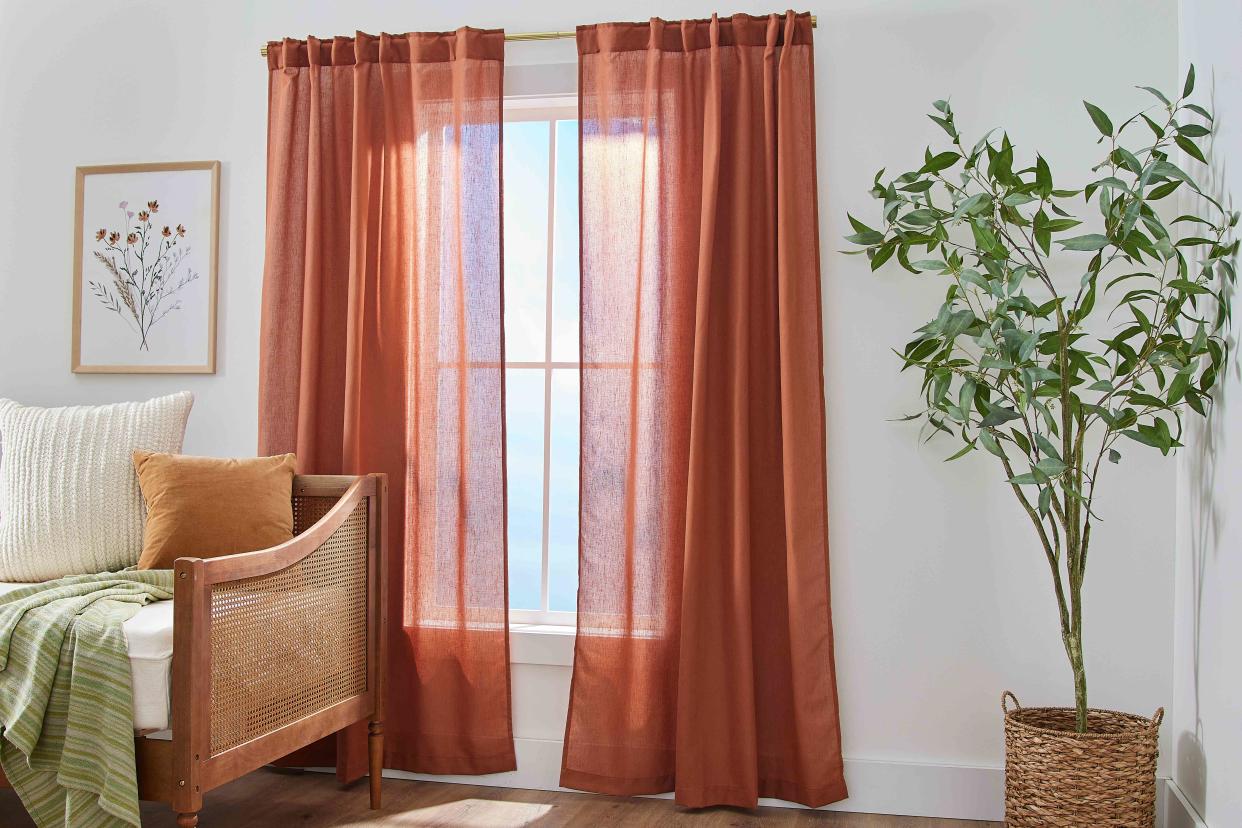
The Spruce / Jacob Fox
If you're in the process of shopping for curtains for your home but are unsure as to how to choose the right curtain length, you'll want to consult our guide to curtain lengths and styles.
In addition to blocking light and contributing to a room's privacy, curtains serve an aesthetic function, adding welcome warmth and color. While shopping for curtains, it's important to choose a length that complements your lifestyle and design choices.
Keep reading to learn more about standard curtain lengths, how to measure for curtain length, common curtain styles, and more.
Standard Curtain Lengths
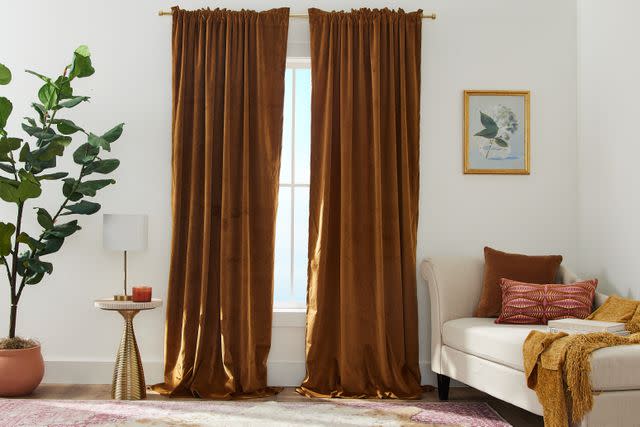
The Spruce / Jacob Fox
Curtains come in many different lengths, but it's important to note that standard curtains are generally 63, 84, 94, 108, or 120 inches long. The length of curtain that you purchase for a given room will determine both the room's ceiling height and your desired look, which we will touch on below.
Designers usually recommend having curtains grace the floor (float), touch and extend onto the floor (break), or fall onto the floor (puddle).
Design Tip
Curtains can also be custom-made to certain windows that call for unique lengths, like above a kitchen sink or radiator.
How to Measure for Curtain Length
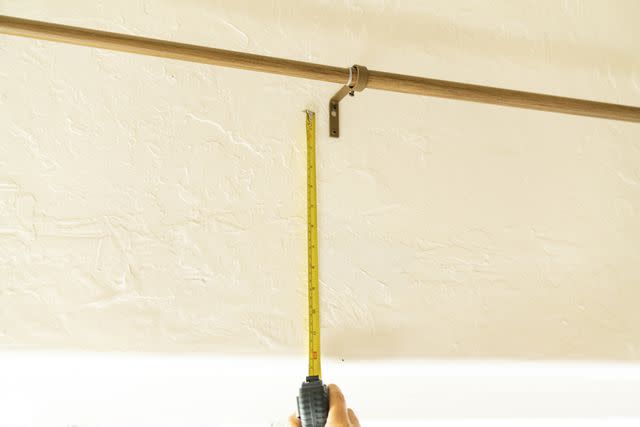
The Spruce / Almar Creative
When measuring a window to determine the appropriate length of curtains to buy, you will want to start by noting that four inches above the top of a window is the standard height for curtains with an outside mount.
The term "outside mount" means the curtains are mounted outside of the frame, while "inside mount" means the curtains hang within the window frame. The width of the curtain should align with the window opening.
In either instance, you will want to measure from the floor to the top of the curtain rod to determine the appropriate length of curtain to purchase for the room at hand.
Curtain Length Styles
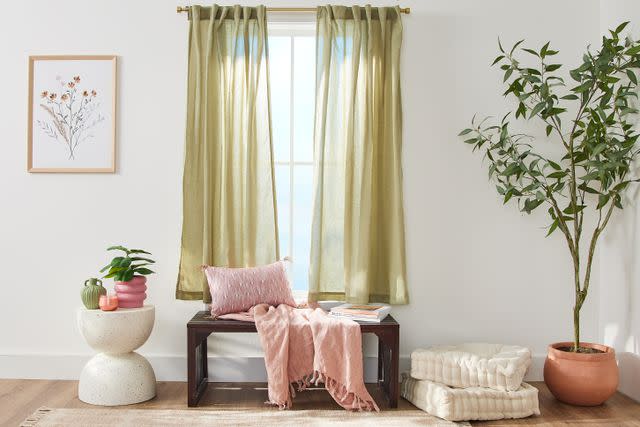
The Spruce / Jacob Fox
Apron length curtainsWhen shopping for curtains, you will also want to determine what curtain length style most appeals to you. A curtain break is one common look; this is when curtains touch the floor with one inch of fabric puddling on the floor.
Below, we're sharing more information about specific common curtain length styles as you prepare to hang your own.
Floor length: Floor length curtains generally just kiss the floor.
Apron break: An apron break refers to when curtains extend slightly beyond the windowsill.
Windowsill: These types of curtains hang until right above the windowsill.
Trouser break: This is another term used for "break," and refers to curtains that hang just an inch onto the floor.
Puddle break: This refers to instances where several inches of fabric sit on the floor; it's most commonly seen in formal spaces, as the effect adds a dramatic, traditional touch.
Consider Curtain Width
As noted above about inside and outside mounts, it's important to consider curtain width while shopping as well. Generally, your curtains should be twice as wide as the width of your window, but some people will opt for curtains that are between one and a half and three times as wide.
This ensures that your window will look well-dressed and not too sparse. It's important to also factor in where your curtain rod will be placed above the window when accounting for width.
Tips for Styling Curtains
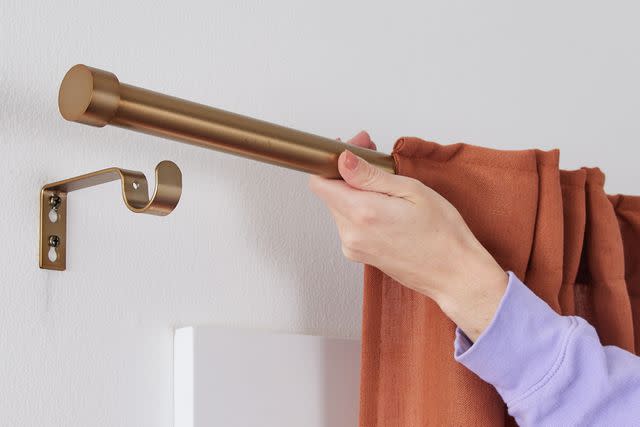
The Spruce / Jacob Fox
Once you've selected your curtain length, there are other factors to consider with regard to curtain styling, highlighted below.
Rod Types and Styles: There are many rod types and styles to consider; some common types include tension rods, which are similar in style to shower rods (they don't require any hardware to install), single curtain rods, double rods, and traverse rods (these feature a pull cord), to name a few.
Double Rods: In some cases, people will hang double rods above their windows, designating one for their main set of curtains and using the others to hang sheer panels.
Sheer Panels: You may wish to add sheer panels behind your curtains in order to still allow for some privacy during the daytime while maximizing the flow of light into a room.
Common Curtain Materials: You'll want to select a curtain material that best complements your room's aesthetic. Curtains are often made out of cotton, velvet, silk, linen, and polyester. Velvet curtains may add a sense of luxury and elegance to a room, while linen curtains will result in a more laid back look, for example.
Frequently Asked Questions
Should curtains touch the floor or the windowsill?
This depends on the curtain length style you prefer. Curtains that break touch the floor, whereas windowsill length curtains cut off at the sill.
How far should curtains be off the floor?
Full length curtains should kiss the floor at most but should not be significantly higher than the ground.
How far should curtains extend past the window?
At minimum, curtains generally kiss the floor. Some will break or puddle, extending one or more inches onto the floor.
Read the original article on The Spruce.

